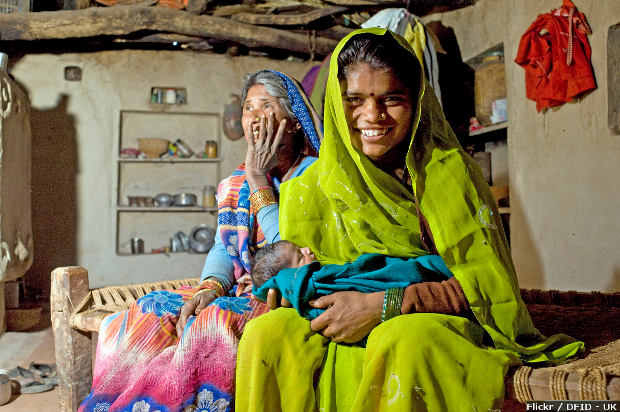- GD Goenka University’s School of Law Successfully Hosts 4th International Law and Technology Moot Court Competition
- Data Protection Dilemma: Analyzing the Veritas Cohesity Merger's Risks and Solutions
- 3 Questions from Aspiring Real Estate Professionals About Earning a Real Estate License in Michigan
- Alepo Technologies Successfully Deploys Advanced AAA Solution for VodafoneZiggo in Partnership with Nomios Group
- This April, Aravali Kitchen at Courtyard by Marriott Aravali Resort extends an invitation to Taste the Himachali Dham Special Dinner
- Aerospace Exchange Bolsters Offerings and Services to Streamline Civil and Military Aviation Part Procurement
- Sommet Education Unveils New Step in Strategic Digital Expansion with Online Executive Certificates
- LAUNCH OF THE BOOK - In The Woods - Oruku by Roma Dessai
- Neue Auctions' April 27th, Art in Bloom Auction Features Contemporary Art Glass, Paintings, more
- Viaante Recognized Among Top 20 IT Services Companies by DesignRush
- Times Prime's New Billboard at Mumbai Sea Link Proves Too Small to Contain Its Massive Membership Benefits
- Codilar To Showcase Award-Winning Digital Commerce Solutions At Seamless Middle East 2024
- 2024 Thailand Tourism Report Unveiled by Tourism.co.th
- This Earth Day, Fairmont Jaipur stands at the forefront of sustainable hospitality.
- Yemeni Man, 59, Receives Life-Saving Living Donor Liver Transplantation
 Mail to a Friend Mail to a Friend |
|
     |
Led By Wealthy Urban Women, Caesarean Sections Rise In India

Over 21 years to 2014, the richest quintile?top 20% of the population by income?undergoing caesarean section deliveries in India has gone up from 10% to 30%, raising the country?s average caesarean-section rates from 5% to 18% over the same period, according to a recent analysis of national health data. The rate of caesarean section among the poor has stayed the same over this period: 5%.
International researchers presented these facts during the launch of Maternal Health Series 2016, a report released in Mumbai on February 3, 2017 by The Lancet, a peer-reviewed global medical journal. The event was part of the Human Rights in Childbirth India Conference.
An independent analysis of data from the National Family Health Survey (1992-93 to 2015-16) and Rapid Survey on Children 2013-14 pegs India?s caesarean-section rate at 18%, higher than the Lancet report?s estimate of 10%.
The caesarean section is a globally recognised maternal health-care indicator: When caesarean section rates rise towards 10% across a population, maternal and newborn deaths decrease; if the rate goes above 10%?as appears to be the case in India?there is no evidence of improvement in maternal or neonatal mortality, according to this 2015 World Health Organization (WHO) statement.
A caesarean section may be necessary when vaginal delivery poses a risk to the mother or baby. However, caesarean sections can cause significant complications, disability or death, particularly in settings that lack the facilities to conduct safe surgeries or treat potential complications, the WHO warned in this 2015 statement.
State-wise data, analysed by the Series authors, showed higher caesarean section rates in private facilities than public-health institutions. For instance, the caesarean section rate in private facilities of Tripura is close to 74% while in public institutions it is about 18%. It is the same in West Bengal, where caesarean-section rates in private and public health-care institutions are 70.9% and 18.8%, respectively.
Rajasthan has the lowest caesarean-section rates in private facilities at 23.2%, whereas Bihar has the lowest rate in public institutions at 2.6%. Telangana reported the highest caesarean-section rate in both private and public institution at 75% and 40.6%, respectively.
The National Family Health Survey-4 (NFHS-4) of 2015-16 reflects the disparities in caesarean section between urban and rural, and rich and poor. In Tripura, 87.1% and 57.6% births in private facilities in urban and rural areas, respectively, were caesarean sections, according to NFHS-4.
Telangana registers the highest incidence of C-section use in India at 58%. Caesarean section rates rose across states over a decade to 2015-16. In southern Tamil Nadu, percentage of caesarean-section births rose from 20.3% in 2005-06 to 34.1% in 2015-16. Goa followed at 31.4%, up from 25.7% in 2005-06.
In Manipur, the rate went from 9% in 2005-06 to 21.1% in 2015-16; in Assam and Odisha from 5.3% to 13.4% and 5.1% to 13.8%, respectively.
A global rise, led by middle-income countries
Caesarean section rates are rising globally.
Low-income countries reported lower rates of caesarean section (up to 10%) as compared to the middle-income and high-income countries, reported the Lancet. Worldwide, the highest caesarean-section rates are in middle-income countries, ranging between 40% and 60%.
?The reason for such high rates is less regulation in some of these countries, which are just emerging from being low-income countries, and there is an allure in technology,? said Suellen Miller, one of the lead authors of the Series, and professor at the department of obstetrics, gynecology and reproductive health, University of California, San Francisco.
Unnecessary caesarean sections also pull resources away from other services in overloaded and weak health systems.
Too little, too late, and too much, too soon
To describe the disparity in caesarean section rates between countries and within countries, the Series? authors have coined a term: ?Too little, too late and too much, too soon?.
Too little, too late describes care with inadequate resources, and is responsible for high maternal mortality in low-income countries where women die due to lack of timely health care.
Nearly five women die every hour in India from complications during childbirth with heavy blood loss caused by haemorrhage being a major factor.
Too much, too soon is a problem of high-income countries, where women experience routine over-medicalisation of normal pregnancy and birth. These include induction of labour, augmentation with oxytocin (hormone), caesarean section, episiotomy (surgical cut made at opening of the vagina during childbirth), excess fetal monitoring, etc.
In 2010, over 3.5 million to 5.7 million unnecessary caesarean sections were done in high-income and middle-income countries, whereas one million to 3.5 million caesarean sections were needed but not performed in low-income countries, points out The Lancet Series.
Tip of the iceberg: Data likely to be underestimates
Caesarean-section rates are rising due to various factors, including economic, logistical, and cultural.
Natural birth is a waiting game whereas the caesarean section is quick and saves time for both the doctor and the patient. Rich families can afford caesarean sections, which offer doctors better money than a vaginal delivery. Also, doctors fear repercussions (physical abuse or legal) in case something goes wrong.
?Corporate hospitals have surgical targets for doctors, which if they fail to meet, they are shown the door,? said Fatima Poonawala, gynaecologist and obstetrician based in Bengaluru, who was forced to quit her corporate practice. She now runs her own Alfa Clinic. The figure of 10-15% caesarean section rate in India is an underestimation, she said.
?The data of National Family Health Survey and the Lancet Series is just a tip of the iceberg,? said Arun Gadre, gynaecologist and obstetrician, and coordinator of Pune-based NGO Support for Advocacy and Training to Health Initiatives (SATHI), which runs a campaign on health for all. Both urban and rural areas in India are facing ?an epidemic of unregulated caesarean section births.?
On the face of it, an overall 10% caesarean section rate in India seems acceptable. But, in reality, we need to disaggregate everything into public, private, urban, rural, wealthy, poor. The disparities are ?huge and worrisome?, said Miller.
Company :-indiaspend
User :- kiran matkar
Email :-kiranmatkar@yahoo.com
Phone :-05867-05867-66505867
Mobile:- 22-66505867
Url :- http://www.indiaspend.com/









